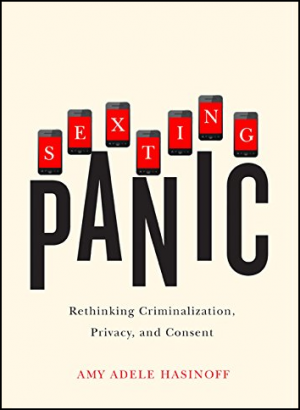Is there harm in sexting?

A new book released this week by a researcher at the University of Colorado Denver examines the social conversations around sexting. In her book “Sexting Panic,” Dr. Amy Hasinoff, a professor of Communication at CU Denver, discusses how teenage sexting – sending sexually explicit images or text messages over cell phones and social media – is thought about, talked about, and regulated.
“Sexting Panic” analyzes the debate about sexting while recommending responses that are realistic and nuanced rather than based on misplaced fears about deviance, sexuality and digital media. In the book, Hasinoff argues that the most concerning aspect of teenage sexting is the malicious distribution of private images.
In “Sexting Panic,” Hasinoff illustrates that anxieties about technology and teenage sexuality distract from critical questions about how to adapt norms of privacy and consent for new media to keep teens safe from victimization. Her research finds that criminalization and abstinence policies meant to curb sexting often fail to account for the distinction between consensual sharing and the malicious distribution of a private image.
Hasinoff challenges the idea that sexting inevitably victimizes young women. Instead, she encourages society to recognize young people’s capacity for choice and to rethink the assumption that everything digital is public.

Through her research, Hasinoff explored the typical responses to teenage sexting from parents, teachers, politicians and the legal system. Hasinoff found that legal and educational authorities often blame and even prosecute girls who sext while paying little attention to people who maliciously distribute private images without permission. In “Sexting Panic,” Hasinoff advises that consent is necessary for the production, distribution and possession of private images and information.
“While it may be appealing to advise girls to simply abstain from sexting in order to protect themselves, ending the discussion there obscures the harm of privacy violations,” Hasinoff said. “I suggest that adopting the standard that explicit consent should be required for the circulation of private images and information could result in radically different responses to sexting and have profound implications for social media policies.”
Hasinoff proposes that sexting should be viewed as a form of media production – the malicious distribution of private, sexual images is harmful, not the creation of the images. This model moves the conversation about youth and sexuality online beyond assertions that all forms of sexting are deviant criminal offenses to a more careful consideration of what girls do and do not consent to when they engage in digitally mediated sexual practices.
“By examining the problematic responses to sexting and offering alternative ways of thinking about this new social issue, I contend that scholars, educators and policymakers need to reconsider taken-for-granted ideas about digital media and young women’s sexuality,” Hasinoff said.
CU professor Amy Hasinoff provides the following do’s and don’ts for parents and educators to talk to teenagers about sexting.
What not to say to teens about sexting:
- Don’t simply prohibit sexting - Around one-third of teens are going to sext even if they’re told not to. We know abstinence-only sex ed has failed to reduce rates of unplanned pregnancy and STIs, so we can guess that abstinence-only sexting policies will fail, too.
- Avoid the scare tactic of warning teens not to sext because all sexts will eventually be distributed - When teens hear the message that “all sexts will be distributed,” many will tune out because that doesn’t match up with their experience. Studies show that around 10 percent of private images are distributed without permission.
- Don’t tell teens whose private images have been distributed that their future job and college prospects are ruined and that their images are being viewed by child molesters - This creates unnecessary fear and shame. In cases in which images are distributed among peers without permission, they are very rarely ever uploaded to public websites.
- Avoid telling girls that abstaining from sexting proves and preserves their self-respect and self-esteem - This perpetuates shaming and blaming the victim.
What to say to teens about sexting:
- Teach young people to recognize and respect consent in themselves and others.
- Talk about (and respect) teens’ norms and expectations of privacy on the internet and mobile phones in different contexts. Focus on discouraging privacy violations.
- Be a role model for the importance of digital privacy. Monitoring kids’ texts (or reading their diaries) sends the wrong message that privacy violations are ok.
- Discuss sexting’s similarity to other sexual activities; talk about sexual ethics, consent and respect between partners.
- Discuss rape culture, shaming, homophobia and the sexual double standard. Work with young people to collectively develop ongoing strategies to resist gender- and sexuality-based harassment and bullying.
- Think about the potential legal consequences (to the victims and the perpetrators) before reporting sexting to law enforcement, though consider any applicable mandatory reporting laws or policies.

